Inhalants Addiction Treatment
According to national surveys, almost 21.7 million Americans ages 12 and older have used inhalants at least once. While inhalant abuse is not as prevalent as the misuse of illegal drugs such as cocaine and methamphetamine, it is dangerous enough to be concerned about. In fact, according to the National Institute on Drug Abuse (NIDA), there are over 150 inhalant-related deaths in the US every year. In addition, the highest rate of inhalant use is among 14-year-olds (8th-graders).
What are inhalants?
Inhalants are household and industrial chemicals that produce volatile vapors which can be inhaled via the nose or mouth to give the user a short-lived high. The mind-altering effects of these substances are similar to the effects of alcohol. Some examples of inhalants are spray paints, glues, hair sprays, and nail polish remover. Take note that while there are drugs that can also be inhaled, only those that are rarely, if ever, taken any other way other than inhalation.
How are inhalants used?
There are several different ways that inhalants can be abused. The most common method is “huffing” where the user soaks a rag with a liquid inhalant and holds it to his/her mouth before inhaling the vapors. Another method is “sniffing” or “snorting” which means inhaling the fumes directly from the container. “Bagging” is when the user sprays or deposits the inhalant inside a paper or plastic bag and then sniffs the vapors. Spraying is when the user sprays the inhalant directly into his/her nose or mouth. In some cases, users put the inhalant into a balloon before breathing the substance in through the mouth.
Types of Inhalants
NIDA classifies inhalants into four general categories – volatile solvents, aerosols, gases, and nitrites.
Volatile solvents are industrial and household products that are in liquid form, but evaporate at room temperature. Some examples of volatile solvents include gasoline, paint, glue, correction fluids, nail polish, and paint thinners.
Aerosols are chemical sprays that contain solvents and propellants. Examples of these include cooking oil sprays, hair sprays, spray paint, and deodorant sprays.
Gas inhalants are a variety of substances that range from household and commercial products to medical anesthetics. These include ether, chloroform, nitrous oxide (more commonly known as laughing gas), butane lighters, propane tanks, and refrigerator canisters.
Nitrites are a special class of inhalants because it has a different effect on the body. The first three categories are inhalants that act on the central nervous system, altering the person’s mood. Nitrites, on the other hand, dilate blood vessels and relax the muscles which is why they’re used as sexual enhancers. These inhalants are commonly called “poppers” or “snappers.” Examples include video head cleaners, leather cleaners, and room odorizers.
Achieve Sobriety at Our Southern California Recovery Center
Recovering from an addiction isn’t easy, but it can be done. There are plenty of treatments available that have helped people stop abusing drugs and start living productive lives again. Fill out the form below for a free confidential call back.
How do inhalants affect the brain?
Once inhaled, the chemicals are quickly absorbed through the lungs right into the bloodstream which then brings it right into the brain and other organs. When that happens, the central nervous system is affected and brain activity slows down. This all happens within seconds of inhalation. Like alcohol, inhalants will cause a lack of coordination and impaired judgment. The effects of nitrites are quite different from other inhalants. Aside from excitement, nitrates can cause a flush feeling, dizziness, headache, and a sensation of heat. Other effects of inhalants include:
- euphoria
- excitement
- slurred speech
- intoxication
- aggression
- nausea and vomiting
- severe mood swings
- muscle weakness
- dizziness
- apathy
- stupor
- headache
Dangers of inhalants
Because the effects of inhalants are short-lived (only for a few minutes), many users tend to continue inhaling just to keep the high going. However, this can lead to dizziness, trouble walking, possibly a loss of consciousness, or even a fatal overdose.
Repeated use of inhalants may cause feelings of aggression, memory problems, and false beliefs. Other consequences of long-term abuse of inhalants include:
- hearing loss
- bone marrow damage
- kidney damage
- brain damage
- central nervous system damage
- vision loss
- heart problems
- oxygen depletion
- liver damage
- delayed behavioral development (as a result of the brain damage)
- loss of coordination
- limb spasms
- muscle deterioration
- learning difficulties
Aside from these devastating consequences, inhalant abusers are at risk of “sudden sniffing death” where the heart suddenly stops. Abusing inhalants can also cause death by asphyxiation (a lack of oxygen in the lungs), suffocation, convulsions or seizures, and choking.
Are inhalants addictive?
While not common, addiction to inhalants can happen. Spotting signs of inhalant abuse early and getting them treatment can help prevent a fatal occurrence.
- Lack of coordination
- Chemical odors on breath or clothes
- Stains such as paint on their body or clothes
- Empty spray cans or rags soaked in chemicals hidden from view
- Disoriented or drunken appearance
- Slurred speech
- Loss of appetite or nausea
- Depression
- Inattentiveness
- Anxiety
- Intense cravings
How is inhalant addiction treated?
Treatment for an inhalant addiction starts with detoxification. While detoxing can be done outside of a rehab facility, an in-patient treatment program is recommended. Quitting the use of inhalants may cause withdrawal symptoms such as loss of appetite, nausea, sweating, mood changes, and sleeping problems. Medical supervision can help ensure the comfort and safety of the patient.
Treatment for inhalant abuse may include cognitive-behavioral therapy which can help patients recognize the root cause of their addiction and develop coping methods that can help prevent their relapse. Treatment may also include providing patients with motivational incentives such as small cash rewards for positive behaviors. Patients may also benefit from support groups and a 12-step program.
What We Treat
Spice Addiction
Ecstasy Addiction
Crystal Meth Addiction
Inhalants Addiction
PCP Addiction
Cocaine Addiction
LSD Addiction
Opioid Addiction
We Accept Most Major Insurance
Our intake team can verify your health insurance benefits when you call or fill out the form on our website.









Start Your Recovery Today
About Us

